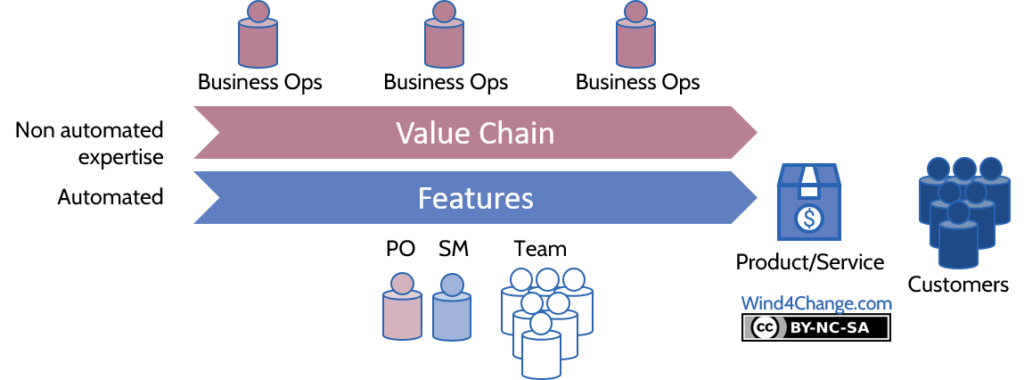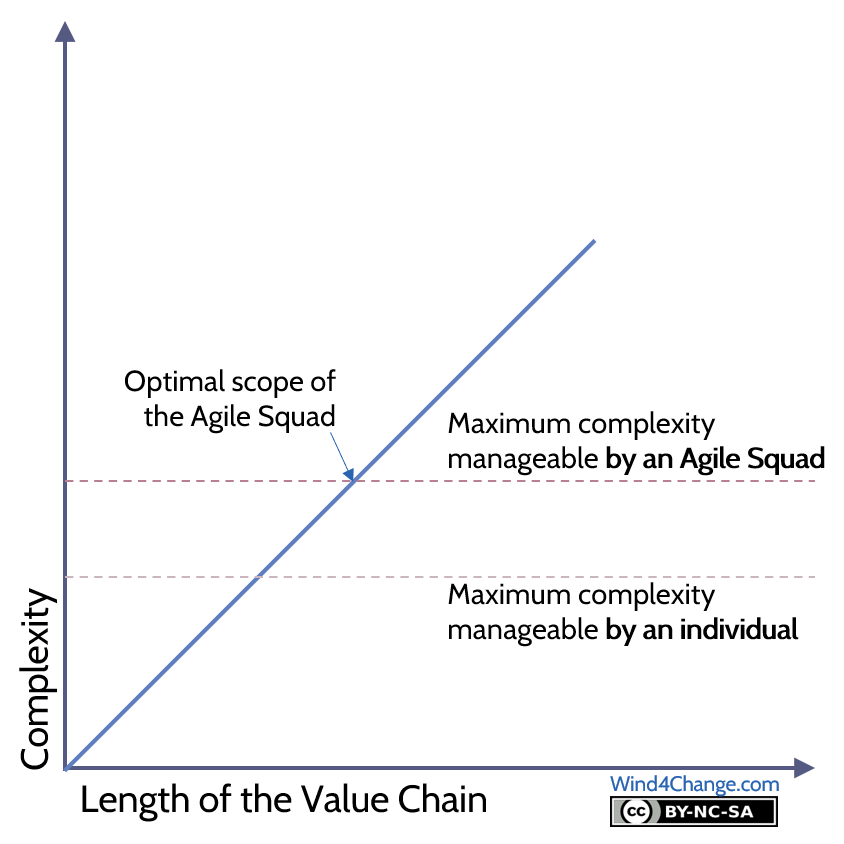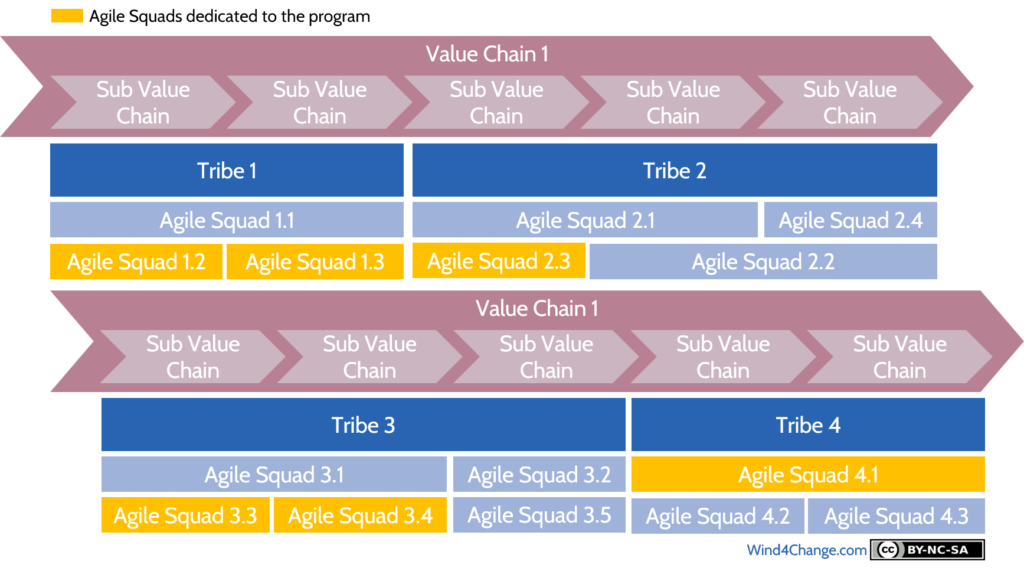How to design Agile Squad in Agile at Scale? What are the principles of alignment on Value Chains? Further, how to align the Tribes and the Agile Squads on the Value Chains? At last, what is an Agile Train for cross organization initiatives?
- Aligning the IT with the Business in Agile at Scale: a prerequisite to design Agile Squad
- Do no scale ! If you can avoid it…
- Aligning the IT with the Business in Agile at Scale: implementation, how Value Chains design Tribes and Agile Squads
- Supporting transversal IT delivery in Agile at Scale: The Agile Train a special design of Agile Squads
- What’s next? Learn more about Agile at Scale
Aligning the IT with the Business in Agile at Scale: a prerequisite to design Agile Squad

As we have seen in the section about Agile Basics, one of the principle when designing an Agile Squad is to align the team with the product so it can deliver end-to-end Features.
Actually, there is more than the Agile Squad and its Product Owner to deliver the Product to the Customers. Indeed, there are many other activities delivered by the underlying business of the product:

- Agile Squad delivers the Features of the product
- Business operates the product built by the Agile Squad to deliver the product/service to the Customers.
All the means and steps to deliver the product/service are call Value Chain.
Do no scale ! If you can avoid it…

So the optimal set up is when the Agile Squad covers the full Value Chain. Unfortunately, in most companies, it is not the case due to the length and the complexity of the Value Chains.
The longer the Value Chain, the more complex it gets either at technological and functional levels. There is then a need to compromise and have the Agile Squad covers a perimeter that allows delivering the longest features within a manageable scope for the Agile Squad.
As far as possible, this alignment is based on the underlying business operations. Indeed, the business has the same issue and a business team cannot covers all the Value Chain either.
Aligning the IT with the Business in Agile at Scale: implementation, how Value Chains design Tribes and Agile Squads

For each Value Chain:
- Firstly, sub Value Chains are identified to gather consistent business area taking into account the underlying business scope of expertise and the size of the supporting IT.
- Secondly, Tribes are designed to enforce business consistency and meet the Dunbar number.
- Thirdly, Agile Squads are designed:
- Taking into account the recurrent delivery of features,
- Maximizing the length of the features delivered,
- And minimizing the dependencies with other Agile Squads.
- At last, you may have to make the following choice:
- Agile Squads covering upstream or other downstream,
- Or Agile Squads covering a subset of the business but covering all the length of the Value Chain in the Tribe.
Supporting transversal IT delivery in Agile at Scale: The Agile Train a special design of Agile Squads

Some initiatives (Agile Epics) are transversal to Value Chains and impact several of them. A recurrent example in the Bank area are the major regulatory initiatives.
In this case, the strategy is to identify the Tribes supporting Value Chains impacted and have Agile Squads, either existing or created for the initiative, dedicated. As a result, this makes it possible to have all the Agile Squads working on the same Business Vision and to maximize the value for this initiative. All this, without jeopardizing the value delivered for the products of the impacted Value Chains. Business must keep going.
Agile Train is coming from the Scaled Agile Framework (SAFe).
What’s next? Learn more about Agile at Scale
Check my other posts about Agile at Scale:
- Review my posts on Agile at Scale foundations:
- What are
- What are the team topologies?
- How to synchronize Agile Squads in Agile at Scale when there are dependencies?
- Check another of my posts introducing Agile at Scale that leverages the book “Doing Agile Right”.
- Review my post on the Agile best practices from the GAO the Government Accountability Office from the USA.
- Read my posts on advanced topics around Agile at Scale:
- What are Leagues in Agile at Scale?
- How to design Agile Squads so they are aligned on the Value Chains.
- Why going for horizontal management? What does it mean and what is the value?
- How roles are reallocated with Agile at Scale?
- Check my posts on project management in Agile at Scale
- What is the impact of Agile on Project Management?
- How does Project Portfolio Management change with Agile at Scale?
- Then, how does Cost of Delay Divided by Duration (CD3) contribute to Agile at Scale?
- How does Beyond Budgeting support Agile at Scale?
- Can an Agile Project be fixed price?
- How to manage Release Management in Agile?
- Review my posts on how to forge a good strategy:
- What are competition and competitive advantage?
- What is a good strategy?
